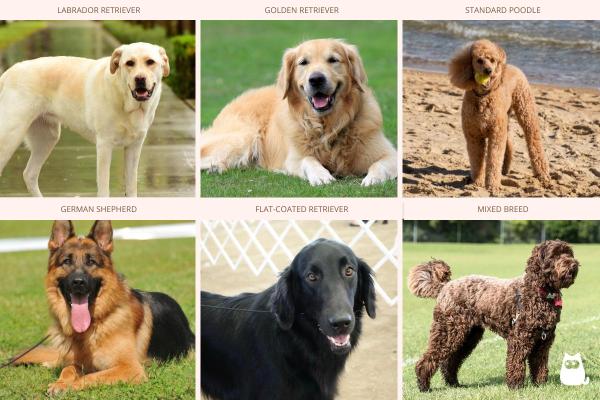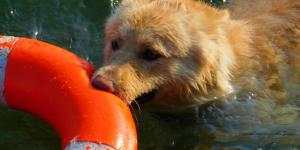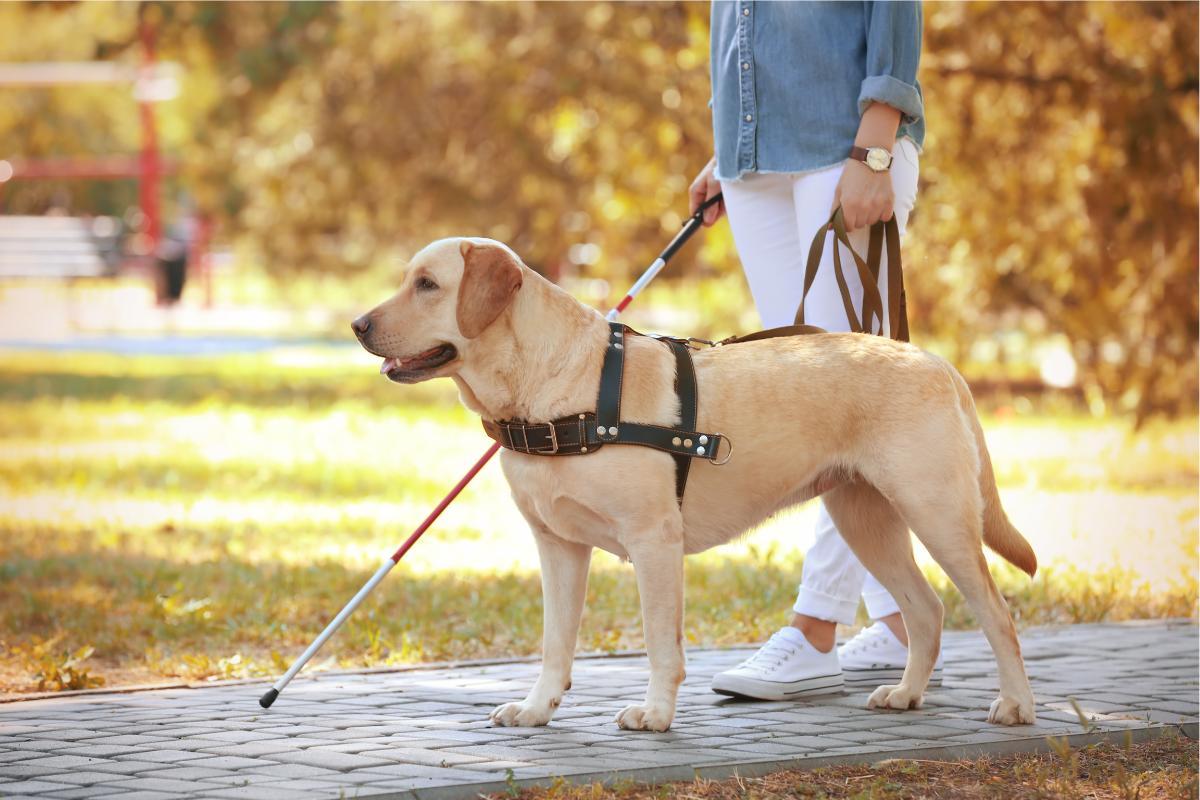Best Guide Dog Breeds - Characteristics, Training and Adoption



See files for Dogs
The best guide dog breeds have certain qualities which make them better able to assist those who have trouble navigating their daily lives. Specifically, guide dogs are used to assist people with vision loss, not all of whom are completely blind. There are other types of assistance dogs which are employed as working dogs for people with various needs. These dogs have traits and characteristics which make them better suited to guiding the visually impaired. These characteristics are both physical and behavioral.
At AnimalWised, we explain what are the best guide dog breeds, as well as what makes them so well-suited to being employed in this capacity. We also explain a little about the adoption process for guide dogs.
What are guide dogs?
Guide dogs make up the most recognized type of assistance dog. Assistance dogs are a broad range of canines which are used to help those with specific needs, both mental and physical. They are a type of working dog. This means they are educated and trained to carry out certain behaviors to assist humans in a certain way. Other working dogs including types of hunting dogs or those which are used in security.
Certain people require assistance dogs because they have physical or mental impairments which make navigating daily life difficult. These can be a result of congenital issues, acquired disease, trauma or other factors. For example, an assistance dog can help someone with reduced mobility to reach certain items or perform certain tasks with which they need help.
Some dogs can be used to help with psychological care requirements. These are often in the form of therapy dogs, dogs used to accompany patients and health professionals in animal-assisted physical or psychological therapy. A good example is the use of dogs to support autistic children in their emotional and social development. There is an increasing presence of assistance dogs in schools, hospitals and care homes to provide a therapeutical role.
Although guide dogs are known to often help in the psychological wellbeing of the visually impaired, they are considered assistance dogs and not therapy dogs. This is because their purpose is mainly practical. This does not mean their own psychological profile is not important. It is that their main role is to assist a visually impaired person in improving autonomy and in helping them in various social spheres such as the labor market.
Many different breeds can be employed as guide dogs for the visually impaired since breed is not the exclusive criteria for suitability. We do not necessarily say there are guide dog breeds, but there are certain breeds which are more likely to fit the criteria of traits necessary to be used in this capacity.
Guide dogs are trained and educated in certain ways to assist people with vision loss. This requires both a certain level of intelligence and the physical capacity to carry out the tasks necessary for assistance. For example, a Chihuahua will be too small to guide a visually impaired person through a busy street. The dogs are also trained to meet the specific needs of the person they will be assisting. We will look in more detail at which dogs commonly have this traits and what are the basic requirements for guide dogs.
Characteristics of guide dogs
There are various organizations which are responsible for training and certifying guide dogs. These organizations also take part in research to improve this training and advance the relevant fields of study. These organizations also determine the requirements for each guide dogs. Generally speaking, they include the following:
- Be very well socialized: this occurs from their first months of life which is considered the period that is critical for socialization. During this period, dogs are introduced to various individuals and environments which will allow them to feel secure when they encounter similar situations in the future.
- Stable and predictable behavior: being able to maintain stable behavior in all types of environments and in interactions is imperative. Any sign of excessive fear, insecurity or aggressiveness disqualifies a dog from being a candidate as a guide dog. The role of a guide dog is to help visually impaired persons avoid problematic situations, not cause them.
- Predisposition to training and ability to concentrate: it is key that the dog has a low sensitivity to visual and aural stimuli. They need to have learned to manage their own emotions in a balanced way.
- Very high level of obedience: in order to learn how to complete the various tasks an assistance dog will need to carry out, they will need both a high capacity for learning and obedience. This means they will promptly and attend to the orders of the person they are assisting. The security and wellbeing of this person is dependent on it.
Much of the training of a guide dog focuses on reinforcing obedience that will begin when they are a puppy. It is not advisable to train an adult dog to become a guide dog since they will be at a disadvantage. The vast majority of guide dogs have devoted their lives to the role. Training is also extended to the guide dog user who will need to know what to expect in terms of the level of assistance they will receive.
Best guide dog breeds
Belonging to a certain breed of dog is not the exclusive criteria for a guide dog candidate. While breed is only one of the factors, certain breeds will be genetically predisposed to meeting the requirements necessary to be a guide dog. Morphology is important since guider dogs need to be of the right size to both guide an adult person and navigate various environments safely.
In practice, there are certain dog breeds which are best suited to being trained as a guide dog. These breeds not only meet the physical requirements necessary for the role, but they have the intelligence and temperament to act as good guide dogs. The dog breed most associated with helping the visually impaired is the Labrador Retriever. This is because they are known for their docile temperament, versatility and remarkable willingness to learn
This does not mean the only dog breed used as a guide dog is the Labrador Retriever. The following are also considered some of the best guide dog breeds:
- Golden Retriever
- German Shepherd
- Standard Poodle
- Flat-Coated Retriever
Dogs born from crosses of the dog breeds considered best for use as guide dogs are becoming used increasingly more as assistance animals. A common example is the Labradoodle, a dog resulting from the cross between the Labrador Retriever and the Poodle. They stand out for their high intelligence and their great ability to learn. They also produce less dander than some breeds, making them a better option for visually impaired persons with allergies.
All types of Labrador Retrievers may be considered as a candidate to be a guide dog. You can understand why this breed and the similar Golden Retriever are so well suited to this role with our comparison of the difference between Golden and Labrador Retrievers.

Guide dog training
In the vast majority of countries, there are centers specializing in the training of guide dogs. These are often private institutions that donate the guide dogs trained by their teams,. They also train the blind or visually impaired users who need guide dog assistance. In the US and UK, these include various organizations such as the Guide Dogs for the Blind, Guide Dogs of America and the Guide Dogs Foundation. These organizations often rely on funding and donations.
The canine training courses for guide dogs provided by these centers must be aligned with the international standards established by the International Guide Dog Federation (IGDF). According to the this federation, their aim is to ensure that all guide dogs are capable of:
- Recognizing and avoiding obstacles, both static and moving as well as different levels of height.
- Notifying their user when they encounter curbs, stairs or unevenness in the pavement.
- Looking for access doors and free seats on public transport.
- Using initiative to find the best alternative way in compromising situations.
Although it may seem counterintuitive, a guide dog is also trained to disobey an order from their user, as long as its execution implies a threat to their physical integrity. For example, a well-trained guide dog must be able to prevent their guardian from crossing a street when there are vehicles on the road, even if this means disobeying a command given to them by their own guardian.
Another marked difference in relation to the training of other working dogs is that the training of guide dogs focuses on minimizing most instinctive behaviors. These include hunting behaviors which are desirable in other working dogs, but which can prove a liability in guide dogs. This is mainly because they may be more easily distracted by certain stimuli.

How to adopt a guide dog
The safest way to adopt a guide dog that has been properly trained to accompany a blind or visually impaired person is by directly contacting associations or centers specialized in the training of guide dogs. If you or someone you know has been recently diagnosed with a visual impairment, it is likely your health worker will put you in contact with these organizations. Not all visually impaired persons will be a suitable candidate for guide dogs.
If you yourself are not visually impaired, there is a great way to help the guide dog community. Due to age and other factors, guide dogs will often be unable to fulfil their role as an assistance animal. For example, if a dog's own eyesight is impaired, they will not longer be able to guide a visually impaired person.
In these cases, the dog will still need a human guardian to care for them. By adopting these dogs, you will be able to provide love and support to a dog which has provided their own invaluable assistance. If you are considering adopting a dog, consider adopting a retired guide dog. Even though they may not longer be able to help the visually impaired, they can still become amazing companions to a variety of different families.

If you want to read similar articles to Best Guide Dog Breeds - Characteristics, Training and Adoption, we recommend you visit our Advanced education category.







